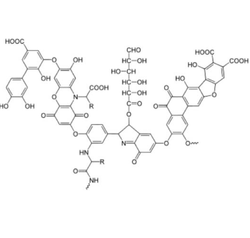Potassium humate and fulvic acid are particularly interesting because they both contain molecular structures of polar and non-polar substituents, so they can transport both water-soluble and water-insoluble species. Indeed, colloidal organics.
For example, soluble humic acid and fulvic acid found in groundwater and surface water are called “third stage” in the traditional two-stage. Solid and water phase systems are used for hydrochemical modeling. Because potassium humate and fulvic acid in the colloid size range are key factors in chemical waste migration and other hydrological processes
A process that can produce enough humus and yellow rot material like fulvic acid.
Sampling methods. Chemical and physical characteristics change with size are necessary for improvement. Our understanding of their role in hydrogeochemistry. Classic method for separating potassium humate and fulvic acid from soil and water. The pH is about 2.
Many studies have attempted to remove metals from humus and treated fulvic acid with hydrochloric acid and hydrogen fluoride. These methods are because strong chemical treatments will change the chemical structure of humus and fulvic acid through acid-catalyzed reactions (decarboxylation, degreasing, etc.) and cause physical changes in shape (hence effective diameter). Other methods to minimize.
Including radionuclides and toxic metals in their natural geochemical state) A method of sampling and sizing of potassium humate, fulvic acid and other humic acids.
Organic and inorganic colloidal materials from groundwater or surface water can be reproduced with minimal artifacts (chemical and physical artifacts). The method should be suitable for processing a large amount of water to obtain sufficient materials for multiple analytical procedures (infrared, C-NMR, pyrolysis, chromatography, mass spectrometry, etc.) Methods should also be relatively simple and easy to use, and easy to use in the laboratory, especially in outside.

